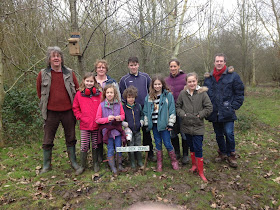A wonderful walk back from Tescos to the village this morning. I checked several local woods for possible Lesser spotted woodpeckers but, as with the last 8 years, no success. However, not a disappointment as got good birds all the time. A marsh tit in Plantings Wood and then a blackcap in East Wood were both pleasing finds. Also, in Muggin's Wood, goldcrests, treecreeper and at least 3 nuthatches.
Yellowhammers chipped from the hedgerows as great tits were the soundtrack to the whole walk. A common buzzard and kestrel near Green Street and coal tit in Muggin's Wood, also.
All in all, 32 species for a 2 hour walk: most enjoyable.
200+ fieldfare with a few redwings near Green Street, flocking out of the hedgerow and on to the field where 4 magpies were already feeding.
 |
| male yellowhammer |
 |
| distant common buzzard |
 |
| great tit |
 |
| coal tit |
 |
| long tailed tit |
 |
| nuthatch |
 |
| same bird |
 |
| wren |
Species list: Year lister in bold
common buzzard, kestrel, pheasant, wood pigeon, stock dove, collared dove, green woodpecker, great spotted woodpecker, skylark, wren, dunnock, robin, redwing, fieldfare, blackbird,
blackcap, goldcrest, great tit, coal tit, blue tit, marsh tit, long tailed tit, nuthatch, treecreeper, magpie, jay, jackdaw, carrion crow, starling, chaffinch, greenfinch, yellowhammer,






















